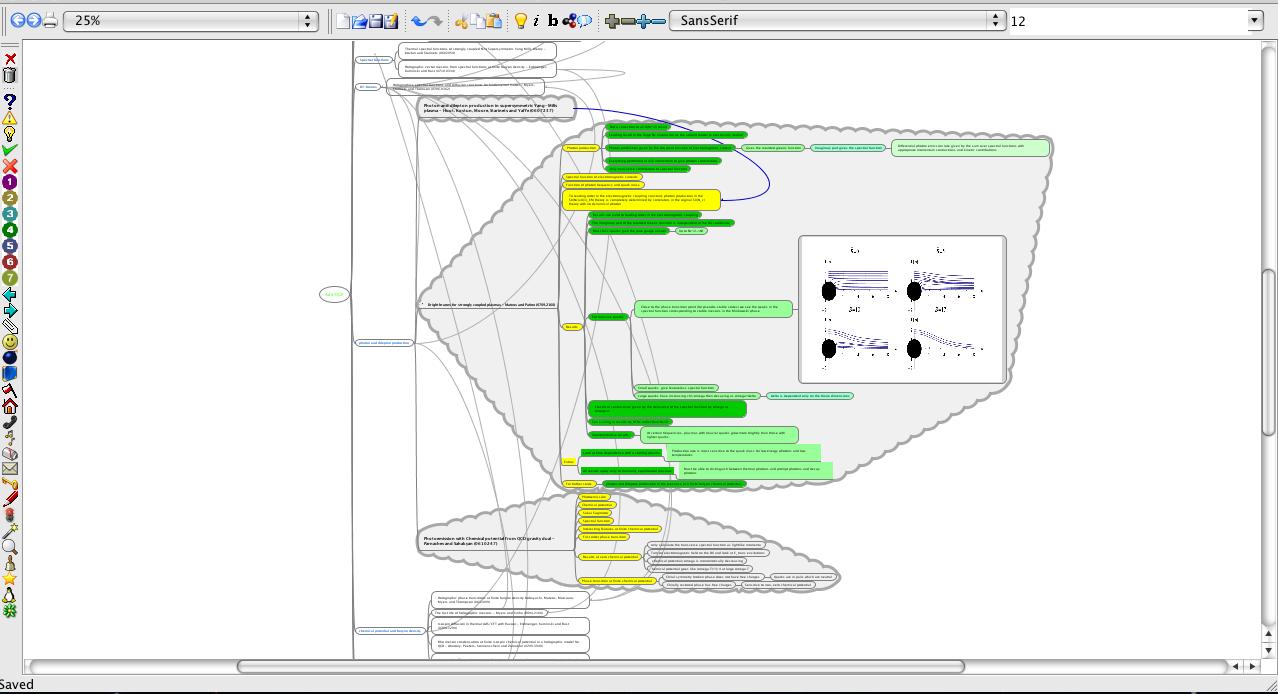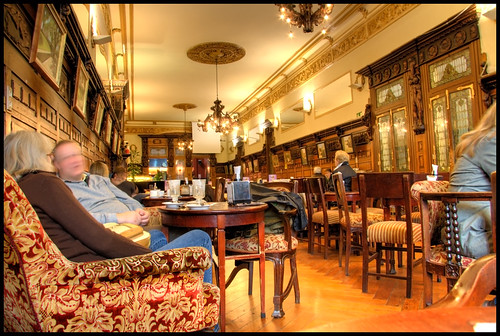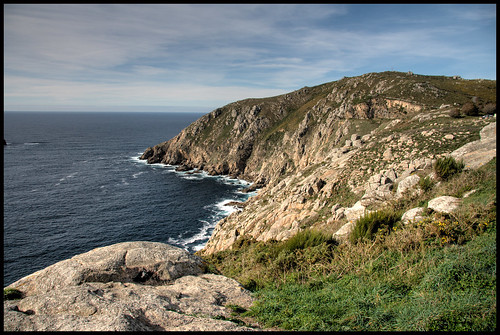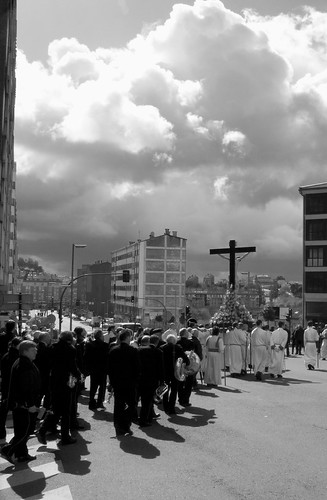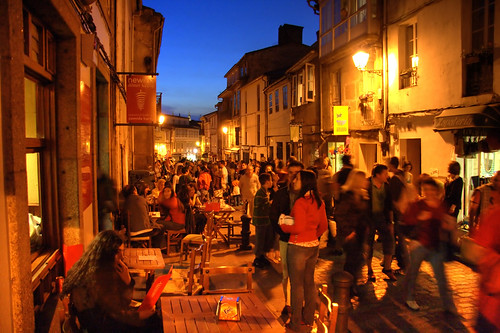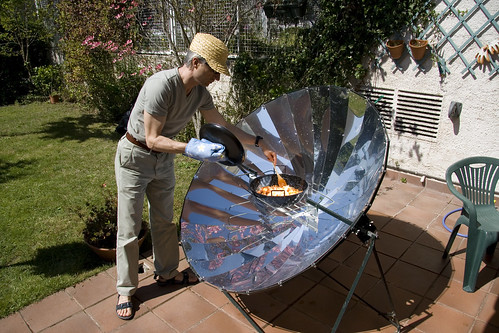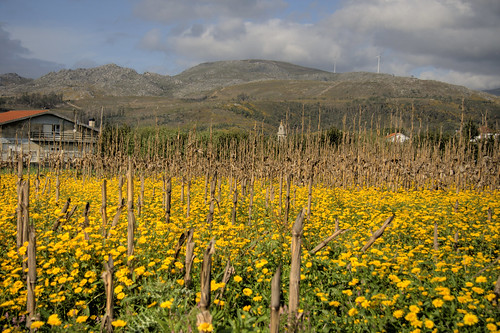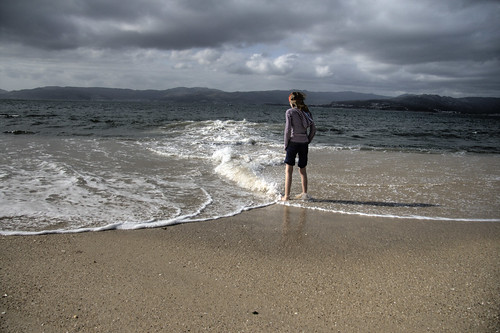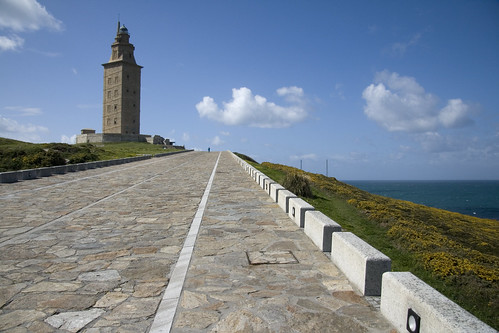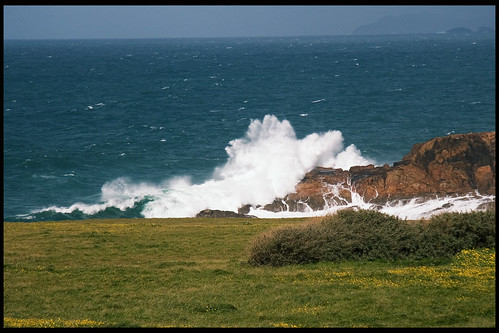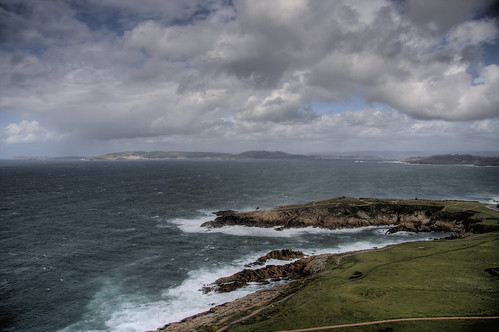I've had family staying with me for the last week, and while I worked most of the weekdays, last weekend we hired a car to make some trips around Galicia. Having now hosted many people in Santiago, I find that about 2 days is plenty to get a taste of life in this small city - which is very pleasant but not terribly exciting (give or take the raucous made by students on a Thursday night/Friday morning). The coastline and surrounding scenery however is wonderful.
It was also fantastic to catch up with family that I really haven't seen much in the last two years, and my little cousins are no longer very little. On a side note, I had always wondered about teaching relatively complicated principles in physics and mathematics to young people and with a (seemingly) willing audience (both of my cousins love maths, and at 9 and 11 are definitely advanced for their age) I launched into what I hoped would end up as a lesson on calculus. We didn't get that far, but I remain convinced that given not a significant amount of time they would have got the basics. They grasped the concepts that I gave them amazingly fast and seemed to want more! I'm not sure I can start a line in Skype lessons in calculus for under 10s just yet, but we'll see.
Anyway, I wanted to add a few more photos from last weekend's excursions, to the town of Noia and along the coast South to a series of sand dunes.
Noia itself is a lovely coastal town with a famed empanada (pie) and some very strollable boulevards.
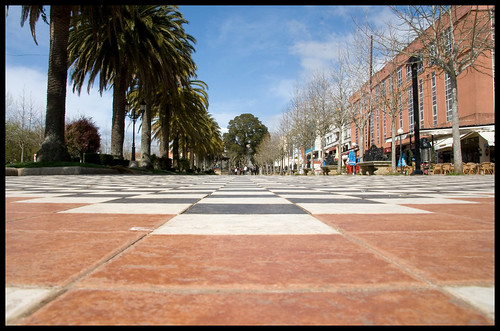
From Noia along the coast, you have rolling fields to the East:
and jutting beaches to the West:
On Sunday we made our way up North to La Coruna, the main political centre of Galicia which is modern, but dotted with old churches, plenty of sculpture:
and the Torre de Hercules - a Roman lighthouse:
which gives more amazing views over the coastline. The day before we were there saw large storms, and the sea was still churning and turbulent:
For kids, the main attraction seems to be the aquarium, which is actually one of the best I've seen. It may not have the most extensive range of exotic sea-life, but the layout is great and enough to keep kids interested for a good couple of hours.
A few more photos from
La Coruna and the
trip down the coast.
Any other tips on the above places would be welcomed for future trips.


